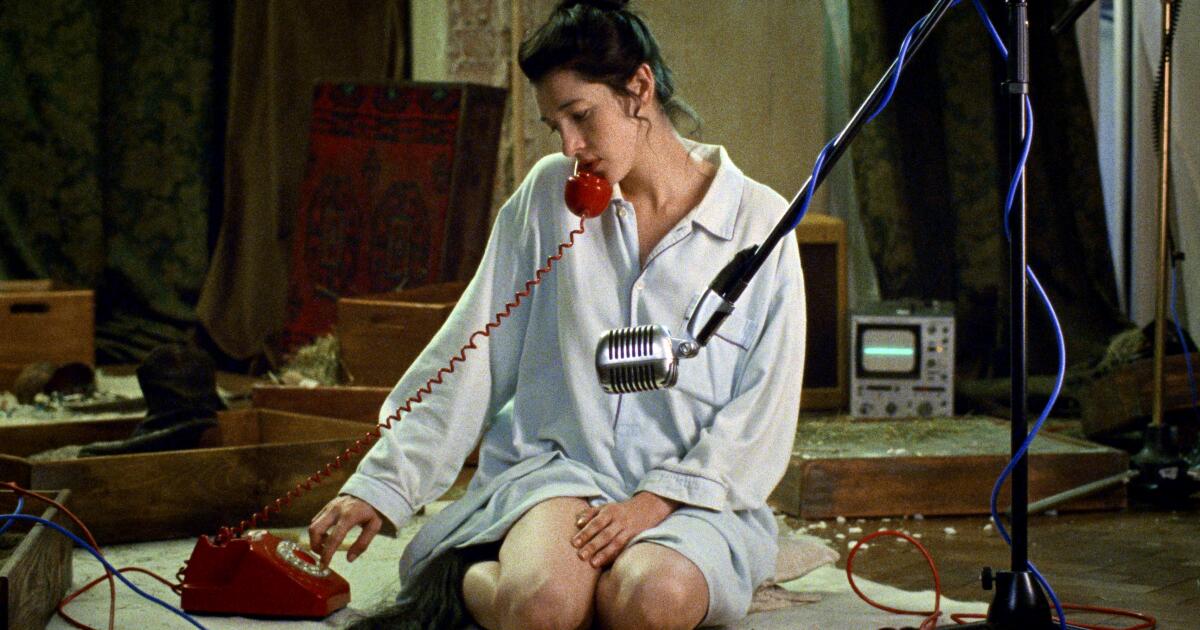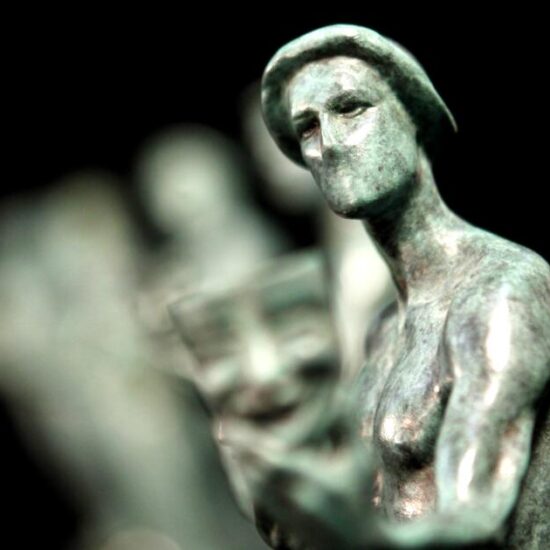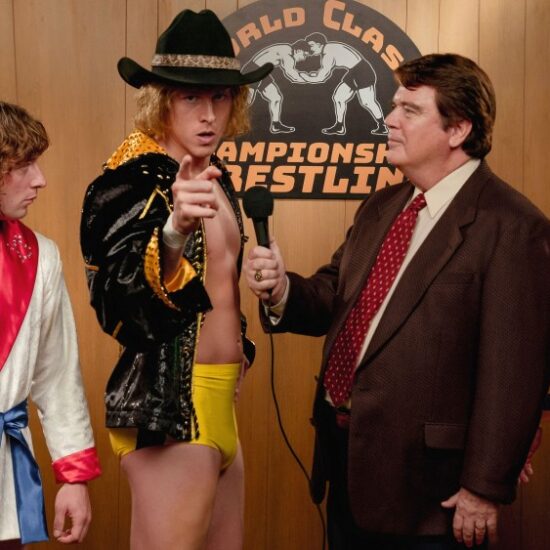
Peculiar and invigorating, visual artist Ann Oren’s feature debut “Piaffe” defies easy description — its lead character grows a horse’s tail, for one thing. But it rewards the attention of a committed voyeur, which all proper cineastes and many of our best provocateurs are anyway. The pinched of mind and the humorless need not bother. Invariably more welcome (one imagines Oren thinking) are those who enjoy their senses and perspectives pried open while their heads get a thorough scratching.
Though set in Berlin, this film’s real location is a timid young woman’s expanding view of her world and herself. The power of movies to reveal, arouse and mystify is also very much on Oren’s mind, specifically the eccentric, transformative discipline of Foley artists: sound technicians who bend everyday objects into a new aural reality. It’s a job this film’s protagonist Eva (Simone Bucio) finds herself unexpectedly diving into when her sibling Zara (non-binary artist Simon(e) Jaikiriuma Paetau) is suddenly hospitalized, leaving their makeshift studio unused and a drug commercial that needs finishing pronto.
The pharma outfit’s product, an equine-inspired mood stabilizer called Equili, is being sold with footage of a dressage horse in various emotional states. Eva’s task is Foley-ing a piece of film, shot inside a sawdust-strewn barn, depicting the piaffe: a graceful, animated trot in place. She tries heels on rocks, boots in sand, swatting a boxer’s glove and putting a necklace in her mouth to get the clack of a horse’s bit. But when the commercial’s director blasts her work by saying “A machine made this,” she embarks on a journey of observation and experience, touching horses at an equestrian center, watching girls on a tram stroke each other’s long hair, mimicking hoof stomps at a thumping nightclub. As if willing into being her own side effects, her lower back begins sprouting a dark-haired horse’s tail.
Within the fantastical realm of “Piaffe,” which Oren co-wrote with Thais Guisasola, lies a cheeky nod to the horse’s importance to film history, but also to the isolating purgatory Foley artists have been known to sometimes experience. Sure, photographer Eadweard Muybridge pioneered moving images to learn how horses galloped (an experiment also referenced in Jordan Peele’s cinema-reflective “Nope”). So why can’t Eva’s exploratory journey into equine sound effects manifest a new female-driven cross-species consciousness?
Sebastian Rudolph and Simone Bucio in the movie “Piaffe.”
(Oscilloscope)
Naturally, Eva gets more confident Foley-ing. Borders of pleasure and role-playing are explored, too, when an emboldened Eva initiates a submissive, unbridled (if kinda bridled) intimacy with a serious-minded botanist (Sebastian Rudolph). Stirred by hybridization — Oren dramatizes his observation of fronds as if it were a peep show — his idea of foreplay is talking about the complex hermaphroditic sexuality of ferns. As for the erotic appeal of her tail in this scenario, all one can say is: different strokes?
Your mileage may vary with the BDSM eroticism in “Piaffe,” but its fluidity and consensuality is assured and well-seeded by both Bucio’s alluring portrayal and Oren’s direction, which tints the whole film with sensory curiosity, as if it were essential to self-discovery, to moving through life and appreciating its tensions. You can feel it in the rich foregrounding of discrete sound — whether in the studio or in the world — and the lively primary colors, fleshy grain and glide of Carlos Vasquez’s exquisite 16mm cinematography, which recalls Jacques Rivette at his most elegantly unconventional.
Though issues of gender, sex positivity, mental health and non-normativity are on Oren’s mind (and yes, animal welfare too), the last thing “Piaffe” feels like is some medicinal manifesto. It’s a horse of a different color, but enjoyably, kinkily so. Oren’s winking playfulness is refreshing, but also elemental. The occasional exposure flares and soundtrack sync pops reminds us this is a movie, but also that we’re watching what’s raw and possible in art and life, that it’s good to be open to wherever images and sounds may take us.
‘Piaffe’
Not rated
In German and English, with English subtitles
Running time: 1 hour, 26 minutes
Playing: Landmark Nuart, West Los Angeles












